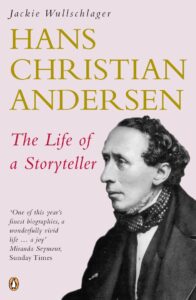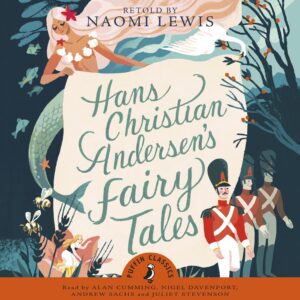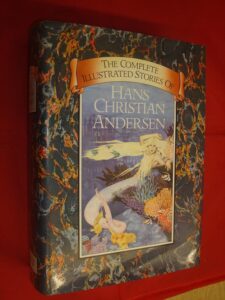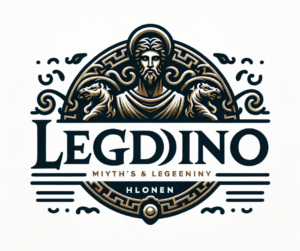
Hans Christian Andersen, the celebrated Danish author of timeless fairy tales, has left an indelible mark on the literary world. His stories, first penned in the 19th century, continue to enchant readers of all ages, decades after their initial publication. As we delve into 2024, Andersen’s tales remain as relevant and magical as ever. This article explores why Andersen’s stories continue to captivate audiences and how their enduring appeal has transcended generations.
1. Timeless Themes and Universal Messages
One of the primary reasons for the enduring popularity of Hans Christian Andersen’s stories is their exploration of timeless themes and universal messages. Andersen’s fairy tales often address fundamental human experiences such as love, loss, courage, and the quest for identity. Stories like “The Ugly Duckling” and “The Little Mermaid” resonate with readers because they reflect the struggles and triumphs that people face regardless of their time or place.
- Self-Discovery and Transformation: “The Ugly Duckling” is a poignant tale about personal growth and self-acceptance. The story of the duckling’s transformation into a beautiful swan offers a powerful metaphor for overcoming insecurities and embracing one’s true self. This theme of self-discovery remains relevant in an era where personal identity and self-worth are increasingly prominent in societal discussions.
- Sacrifice and Love: In “The Little Mermaid,” Andersen explores themes of love and sacrifice, illustrating how the protagonist’s willingness to give up her voice and endure great suffering for the love of a prince underscores the depth of human emotion and commitment. This tale’s portrayal of love’s trials and triumphs continues to resonate with readers who grapple with the complexities of romantic relationships.
2. Rich Imagery and Vibrant Storytelling
Andersen’s ability to weave rich imagery and vibrant storytelling into his fairy tales contributes to their lasting appeal. His descriptive language and imaginative settings transport readers into fantastical worlds where the line between reality and fantasy blurs. The enchanting details of Andersen’s narratives capture the imagination and offer a sense of escape and wonder.
- Imaginative Settings: Andersen’s fairy tales are renowned for their whimsical and elaborate settings. From the magical underwater kingdom in “The Little Mermaid” to the snow-covered landscapes in “The Snow Queen,” his vivid descriptions create immersive worlds that fascinate readers and stimulate their creativity.
- Memorable Characters: The characters in Andersen’s stories are often vividly portrayed with distinct personalities and emotional depth. Figures like the Tin Soldier from “The Steadfast Tin Soldier” and the Little Match Girl evoke empathy and connection through their struggles and resilience. These memorable characters have a way of staying with readers long after they’ve finished the story.
3. Moral Lessons and Social Commentary
Hans Christian Andersen’s fairy tales frequently contain moral lessons and social commentary, making them not only entertaining but also educational. His stories often convey important values such as kindness, perseverance, and the consequences of vanity or cruelty.
- Ethical Values: Andersen’s tales often emphasize the importance of virtues such as kindness and generosity. In “The Little Match Girl,” the poignant ending serves as a reminder of the harsh realities faced by the less fortunate and the need for compassion. Such moral lessons continue to resonate in a world where social responsibility and empathy are highly valued.
- Social Critique: Andersen’s stories sometimes offer subtle critiques of social norms and injustices. “The Emperor’s New Clothes” is a satirical commentary on vanity and the dangers of blind conformity, which remains relevant in contemporary discussions about authenticity and self-awareness.
4. Adaptations and Cultural Impact
The impact of Andersen’s stories extends beyond the pages of his books. Numerous adaptations of his fairy tales have been produced across various media, from stage performances to animated films. These adaptations have introduced Andersen’s stories to new audiences and ensured their continued relevance.
- Film and Television: Andersen’s stories have been adapted into countless films, television shows, and stage productions. Disney’s adaptation of “The Little Mermaid” brought the story to a global audience, reinvigorating interest in Andersen’s original tale and introducing his work to a new generation of readers.
- Literary Homages and References: Andersen’s influence is also evident in contemporary literature and popular culture. Many authors and creators draw inspiration from his fairy tales, paying homage to his storytelling techniques and themes. This ongoing cultural impact helps to perpetuate Andersen’s legacy and keep his stories in the public consciousness.
5. Educational Value and Adaptability
Andersen’s stories are frequently included in educational curricula due to their rich literary qualities and valuable lessons. Educators use his tales to teach a range of subjects, from literature and language to ethics and social studies. The adaptability of Andersen’s stories makes them suitable for various educational contexts.
- Teaching Tools: Andersen’s tales are often used in classrooms to illustrate literary concepts such as plot structure, character development, and symbolism. The universal themes and moral lessons in his stories provide a foundation for discussions about human values and societal issues.
- Adaptability for Different Age Groups: Andersen’s stories are versatile and can be adapted for different age groups and reading levels. From simplified versions for young children to more complex analyses for older students, his fairy tales offer something for readers of all ages.
Conclusion
The magic of Hans Christian Andersen’s stories endures because they resonate with the core of human experience. Through their exploration of timeless themes, vivid storytelling, and moral lessons, Andersen’s fairy tales continue to captivate and inspire readers in 2024. Their adaptability and cultural impact ensure that his stories will remain a cherished part of literary tradition for generations to come. Whether through their enchanting narratives or their profound messages, Andersen’s tales remind us of the enduring power of storytelling and the universal truths that connect us all.

















